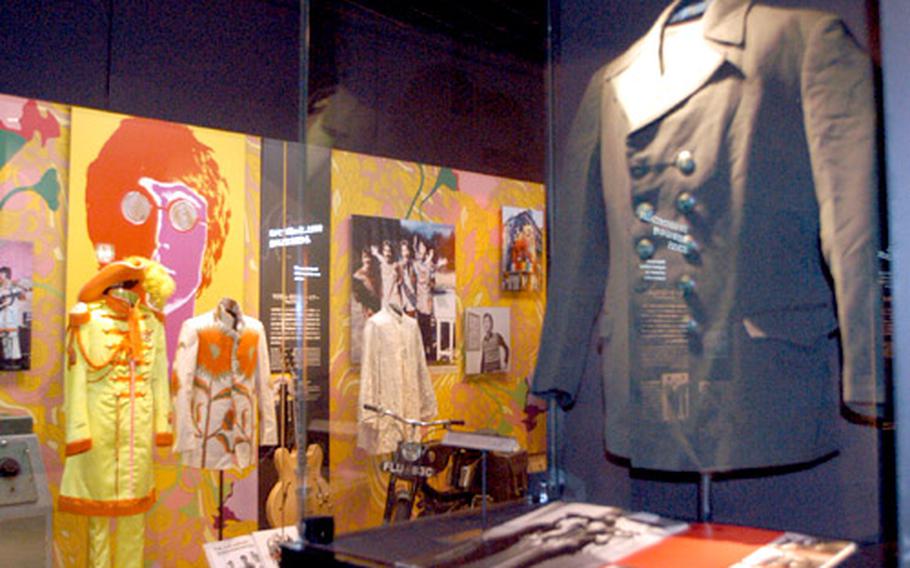
Clothes worn by John Lennon while he was in the Beatles are displayed at the museum in Saitama. (Hana Kusumoto / S&S)
You don’t have to be in Liverpool or New York City to appreciate one of the greatest musicians of all time.
As John Lennon fans around the world lamented his death Dec. 8, about 1,000 fans in Japan made their annual gathering to remember him at the John Lennon Museum in Saitama where they brought flowers and messages.
As the only permanent museum on John Lennon, the museum depicts Lennon’s 40-year life with displays of his guitars, stage costumes and handwritten lyrics.
Many of the approximately 130 items displayed at the museum are personal treasures of Lennon’s wife Yoko Ono; it is the only museum formally approved by her.
“We wish to accurately convey his characteristics and ideals to the people in the 21st century,” said Yoshihiro Katano, the museum’s administration office manager.
To do this, the museum introduces the exhibit with a seven-minute film on Lennon’s life.
The exhibit is divided into nine sections representing different stages of Lennon’s life, including his early years, encounters with the Beatles’ members and years spent in New York City. Throughout the museum, photos, magazine and TV clips are shown with songs representing different times of his life.
Some museum highlights include a large screen showing the making of the film “Imagine” above a display of handwritten lyrics on the New York Hilton note pad. A replica of Lennon’s original lyric notes is on display; notes on the pad indicate the missing middle verses. On rare occasions, the museum will display the actual original lyrics.
Many handwritten memos and drawings are displayed throughout the museum. Another highlight is the Rickenbacker 325 JG guitar, which he used until the 1965 United Kingdom tour, with a handwritten set list taped on the side.
Lennon used drawings to memorize Japanese words and phrases. A drawing of a man standing in the wilderness with a dog and a word, “wabishii,” describes the word, which means “forlorn.”
A recreation of his mansion in New York City with the white Steinway piano, given to Yoko as a gift, shows the later years of his life, which he spent as a househusband.
To convey Lennon’s message of “Love and Peace,” the exhibit ends with a white room with a wall in the center. Lennon’s messages from poems, songs and quotes are surrounded by chairs so visitors can take time to sit and read them.
“Although he is dead, we believe his spirit is alive,” Katano said.
The museum has a gift shop selling T-shirts, postcards and photo frames. A café in the museum modeled after the Mampei Hotel — where Lennon and his family spent summers in the later years of his life — serves some of the menus enjoyed there during the 1970s.
Opened on Oct. 9, 2000, on what would have been Lennon’s 60th birthday, the museum has attracted 335,000 visitors.